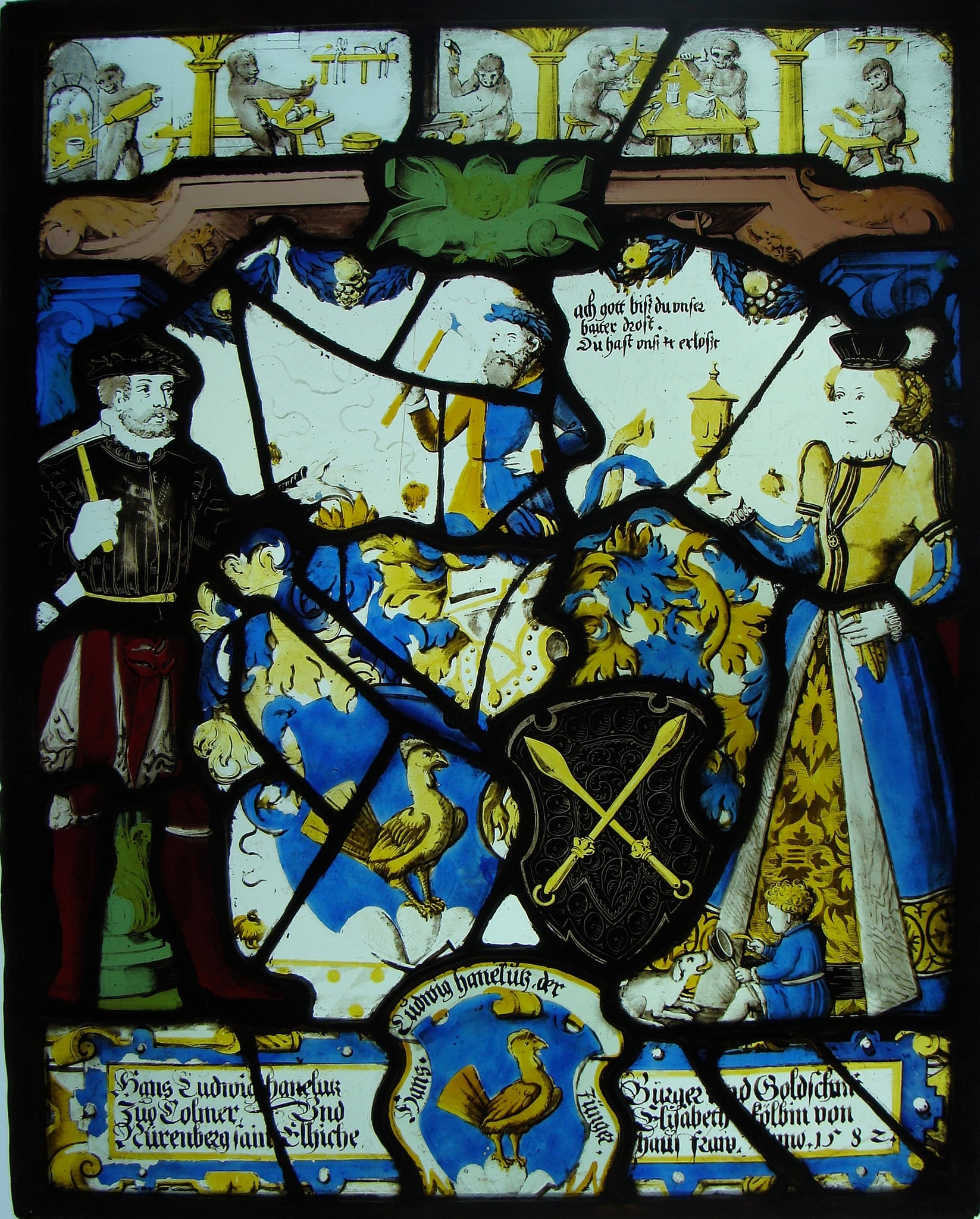Against a white ribboned ground, a man and a woman flank a display of two shields. Standing on the left, dressed in dark colors, the man holds a hammer in his right hand. The demi-man surmounting the helm turns towards the left and holds a similar hammer. On the right, the woman holds a beaker in her outstretched right hand. She is dressed in a long, elegant gown with raised sleeves. Her blue skirt parts to reveal a gold damask underskirt. At her feet a boy plays with a pan and spoon. A dog watches. The scene is framed by green columns with blue capitals supporting a violet architrave. A green boss with an emblem of an angel’s face accents the center and swags of leaves and fruit hang below. At the bottom of the panel an inscription panel is framed by gold and blue. In the center is a coat of arms repeating the one to the left in the scene above. Above the architrave six monkeys engage in various stages of metalwork, From the left to the right, one uses a bellows to heat the fire under the smelting a pot, another uses a crank to express metal, another uses a hammer to beat a cup into form, the next winds a metal wire, another hammers a design on a plate, and the last monkey washes the completed product.
41C322 · timbale, gobelet
42D3 · mariage, couple marié, 'matrimonium'
46A122(HANELUTZ) · armoiries, héraldique (HANELUTZ)
46A122(KOELBIN) · armoiries, héraldique (KOELBIN)
48C311 · joaillier, orfèvre
Arms of Hanelutz, Hans Ludwig: Azure, a cockerel combed or, on a triple mount argent. Arms of Kölbin, Elisabeth: sable, in saltire clubs or maces or; crest: on a helm to sinister a wreath of the colors surmounted by a demi man with hammer; mantling of the colors
ach got biβ du unser/ baiter drost./ Du hast unβ [ . . . ] erlöβt (above. Oh God you are the consolation of us both, for you have saved us)
Hans Ludwig hanelutz der Jünger (Encircling arms. Hans Ludwig Hanelutz the younger)
Hans Ludwig hanelutz Bürger vnd Goldschmit/ Zuo Colmer Vnd Elisabeth Kölbin von Nürenberg sain Elhiche haus fraw [.]nno. 1582 (Below. Hans Ludwig Hanelutz, citizen and goldsmith of Colmar and Elisabeth Kölbin of Nuremberg his wedded wife. In the year 1582).
none
